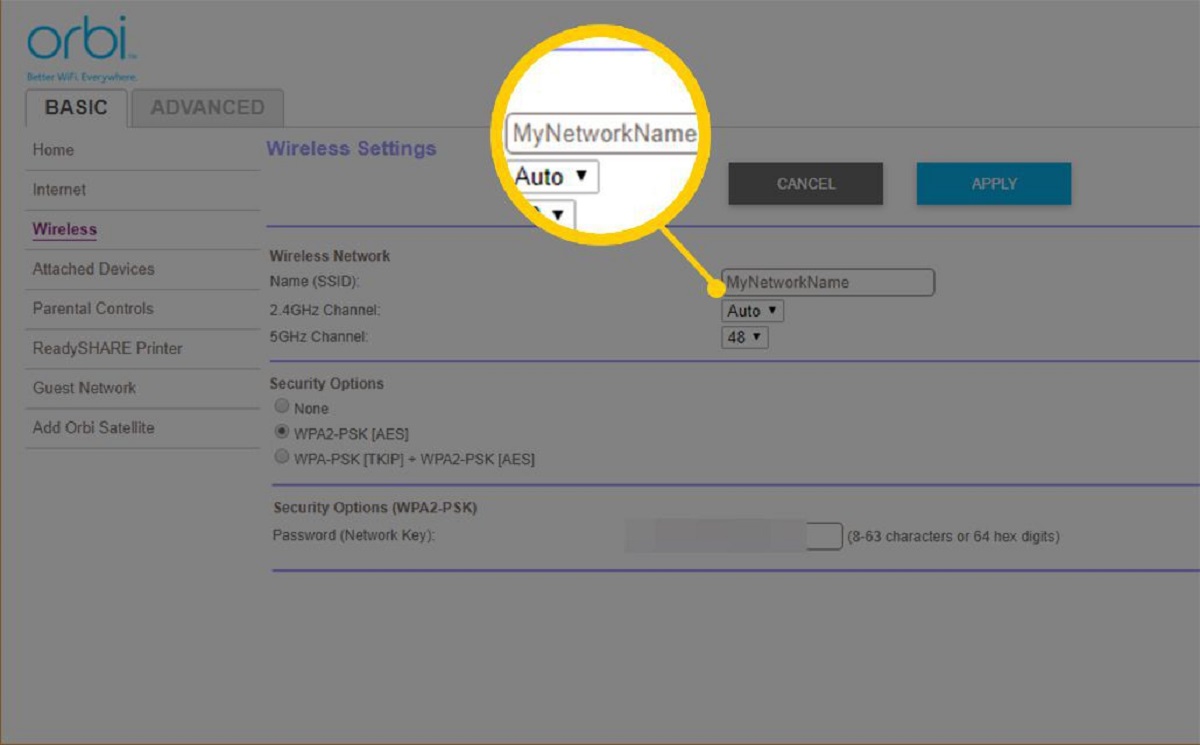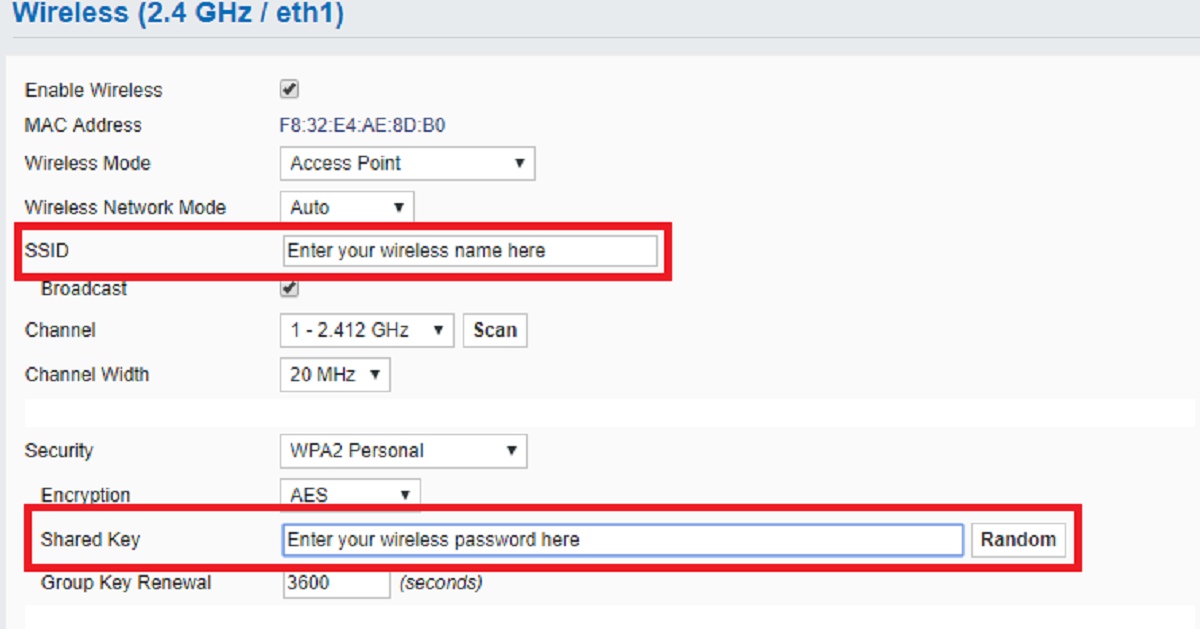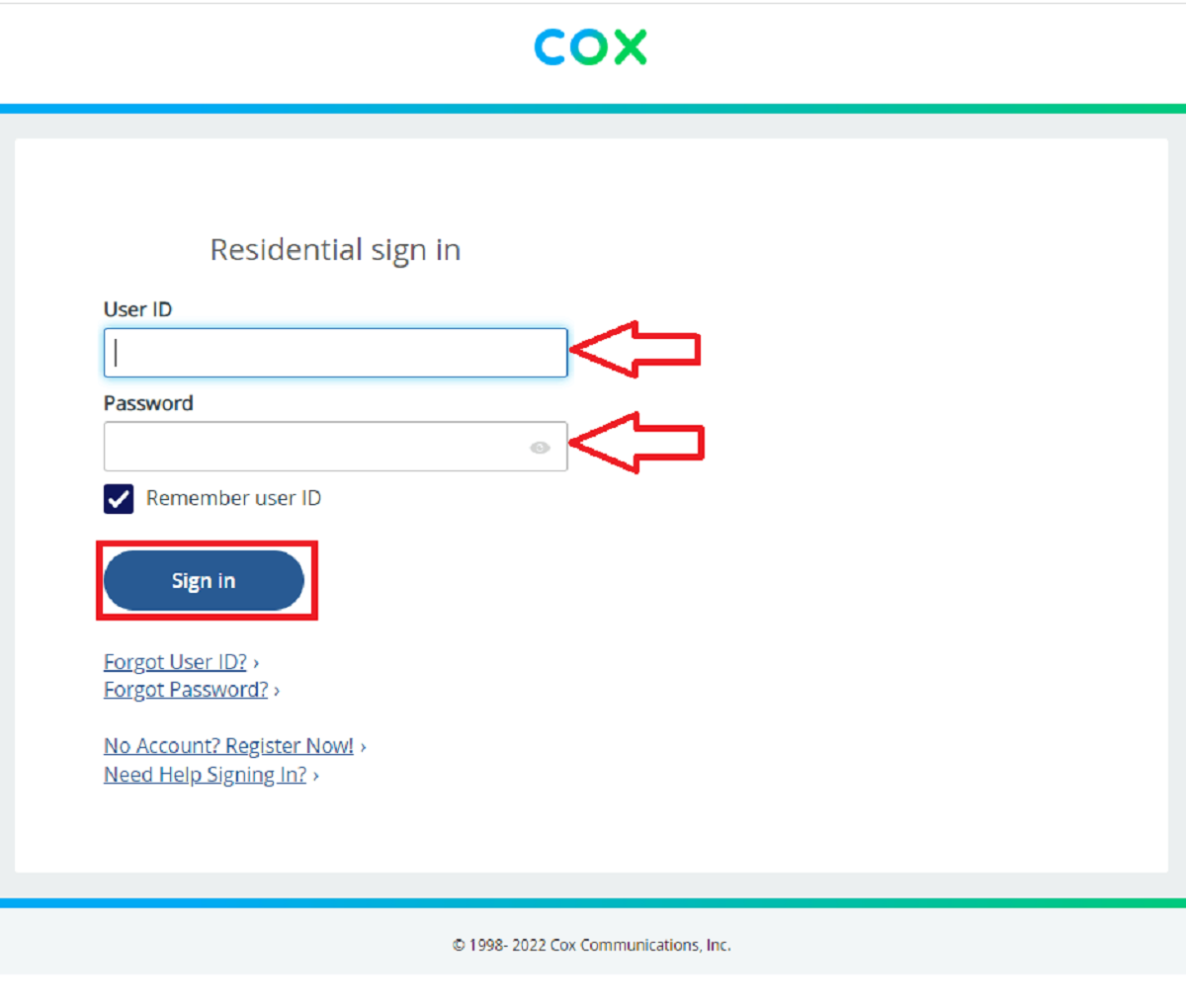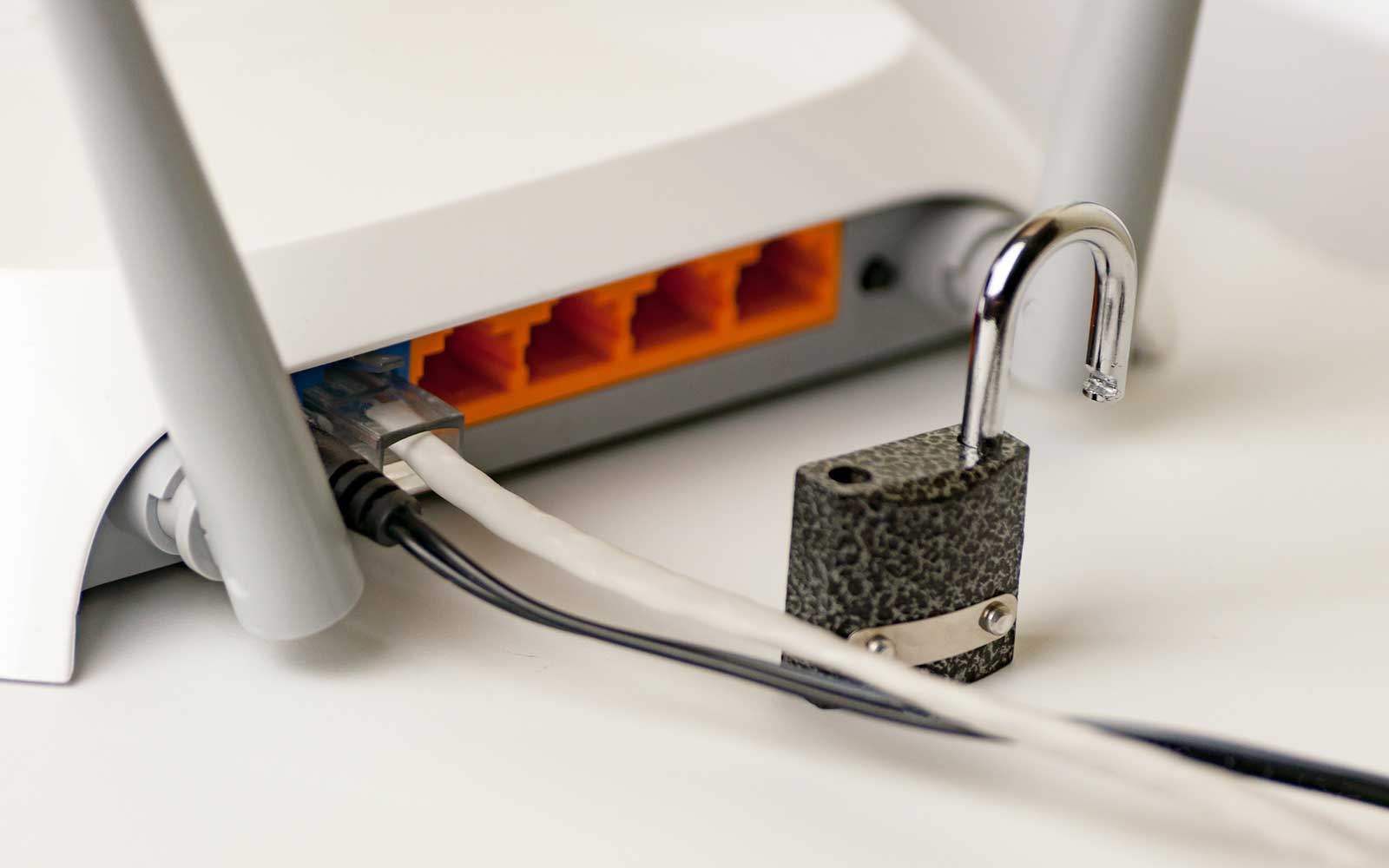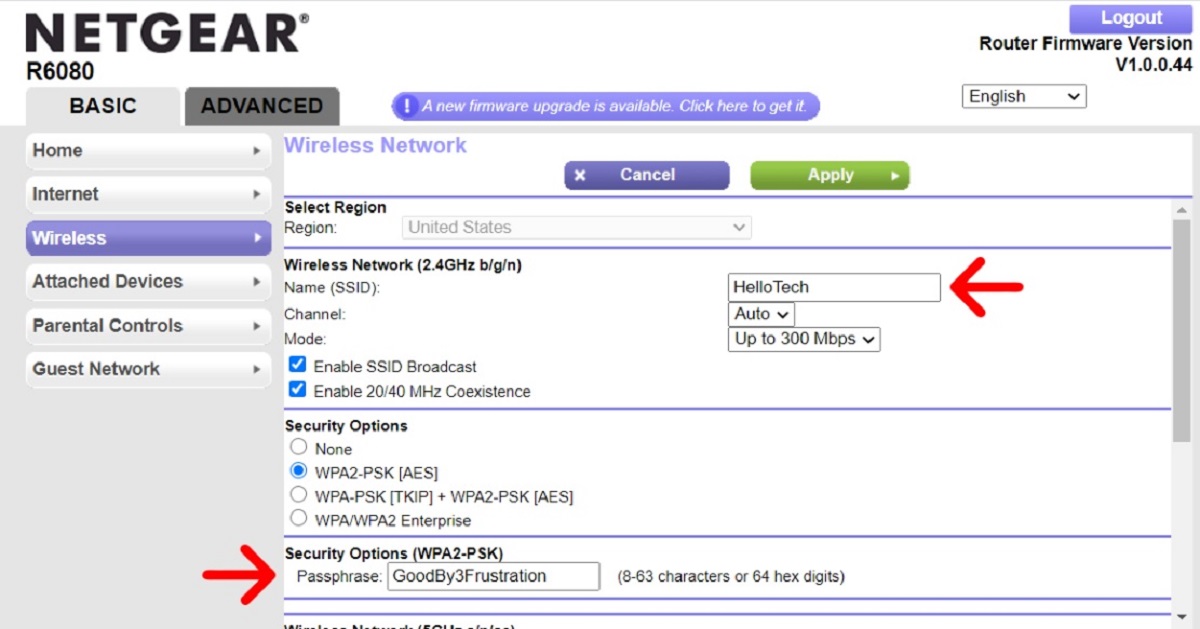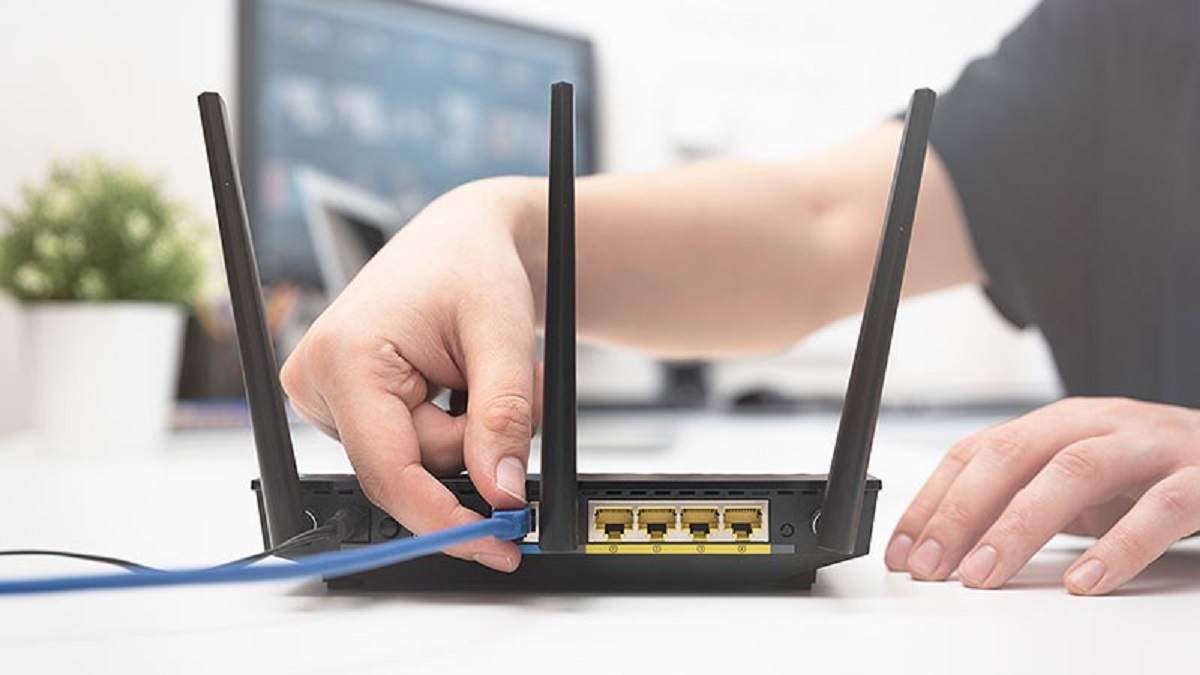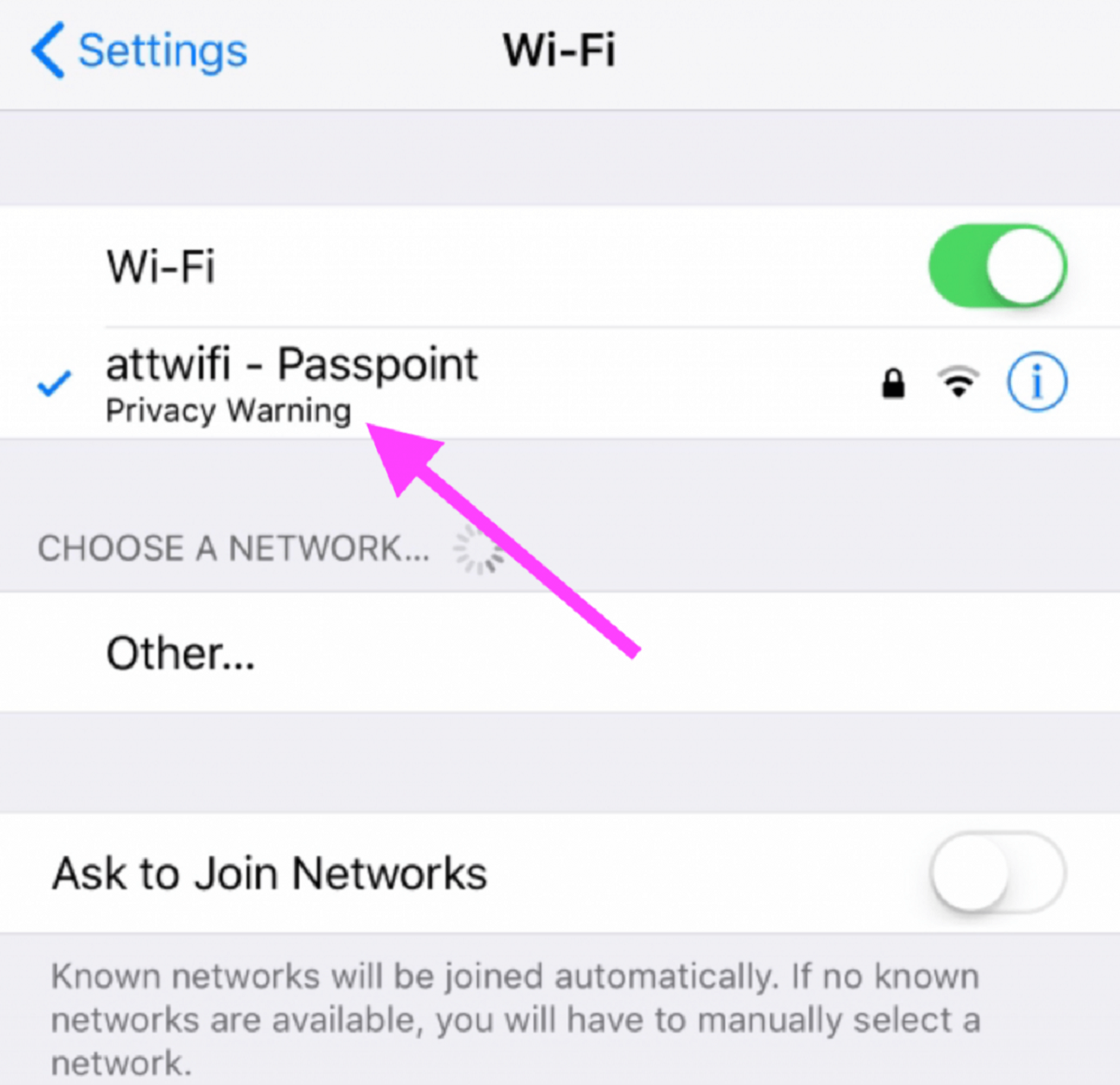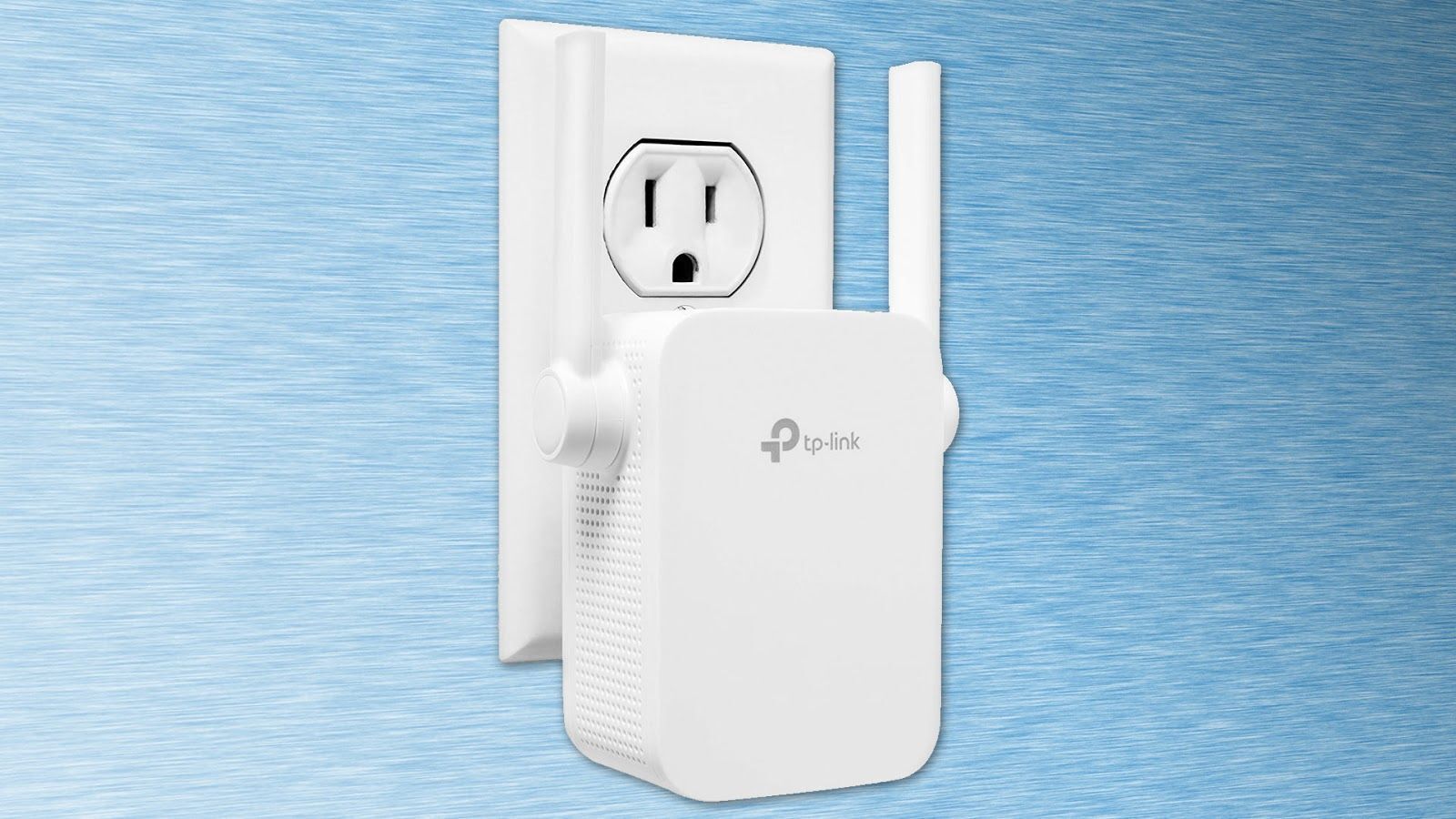What Is SSID for WiFi?
When setting up or connecting to a wireless network, you may have come across the term SSID. But what exactly does SSID mean and why is it important for WiFi? In this section, we’ll delve into the details of SSID and its significance in the world of wireless networking.
SSID, an acronym for Service Set Identifier, is a unique name that is assigned to a wireless network. It acts as an identifier for distinguishing one WiFi network from another. Think of it as the nameplate on a door that identifies a specific room in a building.
The primary purpose of an SSID is to allow devices to establish a connection to the correct wireless network amidst a sea of available networks. By broadcasting the SSID, the WiFi access point or router enables devices within range to detect and join the network. Imagine going to a crowded coffee shop without an SSID – it would be nearly impossible to connect to the right network.
But an SSID goes beyond just network identification. It also serves as a security measure. By having a unique identifier for the network, it becomes more difficult for unauthorized users to gain access. This is because they need to know the specific SSID in order to connect, adding an extra layer of protection.
When you connect to a WiFi network, your device remembers the SSID associated with it. This allows your device to automatically connect to the network the next time it is in range, without having to manually select the network each time. This feature, known as auto-connect, is particularly useful for frequent travelers and those who regularly move between different locations.
Overall, the SSID plays a vital role in the functioning of WiFi networks. It allows devices to identify and connect to the correct network, ensures security by acting as a unique identifier, and facilitates seamless connectivity through the auto-connect feature.
Now that we have a good understanding of what an SSID is and its importance, let’s explore how it actually works in the next section.
Introduction
WiFi has become an indispensable part of our daily lives, providing us with seamless internet connectivity. But have you ever wondered how your device identifies and connects to the WiFi network? This is where SSID comes into play. In this section, we will provide an introduction to SSID and its role in wireless networking.
SSID, or Service Set Identifier, is essentially the name of a WiFi network. It acts as a unique identifier that allows devices to differentiate between different networks in their vicinity. Think of it as a virtual nameplate that distinguishes one WiFi network from another, making it recognizable to our devices.
When setting up a WiFi network, the administrator assigns an SSID to it. This can be a simple and descriptive name like “Home WiFi” or something more unique and personalized. The SSID is then broadcasted by the WiFi access point, such as a router, allowing nearby devices to detect and connect to the network.
But SSID is not just about network identification. It also plays a crucial role in network security. By having a specific SSID, it becomes more difficult for unauthorized users to gain access to the network. They need to know the exact SSID in order to connect, adding an extra layer of protection.
Furthermore, the SSID also enables devices to remember and automatically connect to a network they have previously connected to. This feature, known as auto-connect, is particularly useful when moving between different locations or when using public WiFi networks frequently. By remembering the SSID, your device will automatically join the network whenever it is in range, saving you the hassle of manually selecting the network every time.
In this article, we will delve deeper into the concept of SSID, exploring its significance, how it works, and even how to change it. By understanding SSID and its role in WiFi networks, you will have a better grasp of the technology powering our wireless connections.
Next, we will explain what SSID actually stands for and its purpose in greater detail, so let’s dive in.
What does SSID stand for?
SSID is an acronym that stands for Service Set Identifier. It is an essential component of WiFi networks and plays a significant role in device connectivity. Let’s explore what each part of the acronym represents and how it relates to wireless networking.
The “Service” in SSID refers to the fact that it is a unique identifier for a specific WiFi service or network. It distinguishes one network from another, allowing devices to locate and connect to the intended network. Without an SSID, it would be challenging for devices to differentiate between multiple available WiFi networks.
The “Set” in SSID refers to the collection of devices that are connected to the same WiFi network. In other words, when devices join a particular SSID, they become part of the same network set. This ensures that devices within the same network can communicate with each other and share resources.
Lastly, the “Identifier” in SSID represents its function as a distinctive name or label assigned to a WiFi network. It acts as a unique identifier that helps devices recognize and establish a connection with the correct network. Just like a nameplate attached to a door, the SSID serves as a recognizable mark for a specific network.
By combining these three elements – service, set, and identifier – SSID fulfills its purpose as a means to identify and connect to specific WiFi networks. It allows devices to join a network set and communicate with other devices that share the same SSID.
It’s important to note that SSIDs are not limited to just home or office networks. They are also used for public WiFi networks, such as those found in cafes, airports, or hotels. Each public WiFi network typically has its own unique SSID, making it easier for users to locate and connect to the network they desire.
Now that we have a clear understanding of what SSID stands for, let’s explore its purpose in greater detail and how it facilitates wireless connectivity.
What is the purpose of an SSID?
The SSID, or Service Set Identifier, serves several important purposes in the realm of wireless networking. Let’s explore the main objectives and roles of an SSID to better understand its significance.
1. Network Identification: The primary purpose of an SSID is to differentiate one WiFi network from another. With numerous wireless networks available in any given area, having a unique identifier for each network is crucial. The SSID acts as a virtual nameplate, allowing devices to distinguish and locate the desired network amidst the multitude of available options. Without an SSID, it would be challenging for devices to identify and join the correct WiFi network.
2. Connection Establishment: Another vital purpose of an SSID is to facilitate the establishment of a connection between a device and a WiFi network. When a device receives the broadcasted SSID from a WiFi access point, such as a router, it recognizes the network and initiates the connection process. By providing the necessary authentication information, the device can securely connect to the network and access the internet. The SSID acts as a key component in this connection establishment process.
3. Network Security: An SSID also plays an integral role in ensuring the security of a WiFi network. By having a unique identifier, it becomes more difficult for unauthorized users to gain access to the network. They need to know the specific SSID to establish a connection, adding an extra layer of protection. Additionally, network administrators can configure various security measures, such as encryption and password authentication, to further safeguard the network.
4. Seamless Roaming: SSIDs enable seamless roaming for devices within a network set. When devices move between access points or areas covered by different routers with the same SSID, they can maintain connectivity without interruption. This is particularly beneficial in larger environments, such as offices or public areas, where multiple access points are deployed. Devices can seamlessly transition between access points while remaining connected to the same network.
5. Multiple Networks with Different SSIDs: In some cases, a single WiFi access point or router may have multiple SSIDs associated with it. Each SSID represents a distinct network, allowing for segregation of network resources or providing access to different user groups. This is commonly seen in scenarios where guest networks and private networks are set up. Multiple SSIDs allow for separate authentication mechanisms and access privileges, enhancing network security and management.
Overall, the SSID serves as a critical component in wireless networking, fulfilling multiple purposes. It enables network identification, connection establishment, network security, seamless roaming, and the management of multiple networks. By understanding the purpose of an SSID, we can grasp its importance in facilitating wireless connectivity and maintaining network integrity.
How does an SSID work?
Understanding how an SSID works is essential for comprehending the mechanics of wireless networking. In this section, we’ll delve into the inner workings of an SSID and explore the processes involved in its operation.
When a WiFi access point, such as a router, is set up, it is assigned a unique SSID by the network administrator. The SSID acts as the network’s name, allowing devices to recognize and distinguish it from other WiFi networks in the vicinity.
1. Network Broadcasting: The WiFi access point continuously broadcasts its SSID into the airwaves, making it discoverable to nearby devices. This broadcast is necessary for devices to identify the network and initiate the connection process. Without broadcasted SSIDs, WiFi networks would remain hidden, inaccessible even if the devices were in range.
2. Device Detection: Devices equipped with WiFi capabilities, such as smartphones, laptops, or tablets, listen for SSID broadcasts in the surrounding area. When a device receives an SSID broadcast that matches a network it has previously connected to or is attempting to connect to, it recognizes the network and prepares to establish a connection.
3. Connection Initiation: Once the device detects the desired SSID, it initiates the connection process with the WiFi access point. The device sends a connection request along with any required authentication information, such as a network password or encryption key. The access point validates the information provided by the device and, if successful, establishes a secure connection.
4. Network Authentication: Depending on the network’s security settings, additional authentication steps may be required. This can include entering a username and password or providing a certificate for verification. The SSID acts as a reference point for the device to ensure that it is connecting to the correct network, preventing it from connecting to unauthorized or malicious networks.
5. Connectivity and Data Transfer: Once the device successfully establishes a connection to the network, it gains access to the internet and can transfer data between the device and other devices within the network. The SSID allows devices to recognize each other as part of the same network set, allowing for seamless communication and resource sharing.
It’s important to note that not all SSIDs are broadcasted or made discoverable. Network administrators can choose to hide the SSID, making the network invisible to devices scanning for available networks. In such cases, devices will need to manually enter the hidden SSID to establish a connection. While hiding the SSID can provide an additional layer of security, it can also make connecting to the network more complex for users.
Understanding how an SSID works provides valuable insights into the process of connecting devices to WiFi networks. By broadcasting the SSID, allowing devices to detect and connect, and facilitating seamless communication within the network, the SSID ensures smooth and secure wireless connectivity.
How to find your WiFi’s SSID?
If you’re looking to connect a device to your WiFi network or simply want to verify the SSID of your network, there are several methods you can use to find your WiFi’s SSID. Here are a few common ways to do so:
1. Check the router or access point: The SSID is usually displayed on a label or sticker attached to your WiFi router or access point. Look for the nameplate or any identifying information on the device itself. It is often labeled as “SSID,” “Network Name,” or something similar. Note down the SSID displayed on the device.
2. Use a computer or mobile device: Connect a computer or mobile device that is already connected to the WiFi network. Open a web browser and enter the default gateway IP address in the address bar (e.g., 192.168.1.1). This will take you to the router’s administration page. Look for the wireless settings or network settings section, where the SSID is usually displayed. Take note of the SSID mentioned in the settings.
3. Use a WiFi scanning tool: There are various WiFi scanning tools available for both computers and mobile devices. These tools scan the surrounding area for available WiFi networks and display their SSIDs along with other relevant information, such as signal strength and security type. You can use applications like NetSpot (for Mac) or WiFi Analyzer (for Android) to scan for and identify the SSID of your WiFi network.
4. Check network settings on a connected device: If you have a device already connected to the WiFi network, you can check its network settings to find the SSID. On a Windows computer, go to the Network and Sharing Center, click on the connected network, and select “Wireless Properties.” The SSID will be displayed under the “Network Name (SSID)” field. On a Mac, go to System Preferences, click on Network, select the “Advanced” button, and navigate to the Wi-Fi tab where you will find the SSID. On mobile devices, the SSID can generally be found in the network settings or WiFi settings section.
Remember that the SSID is case-sensitive, so ensure that you enter it exactly as it is displayed, including any capital letters or special characters. Once you have determined your WiFi’s SSID, you can use it to connect devices or troubleshoot any network issues that may arise.
By following these methods, you can easily find your WiFi’s SSID and ensure a successful connection to your wireless network.
How to change your WiFi’s SSID?
If you want to personalize your WiFi network or strengthen its security, changing the SSID (Service Set Identifier) is a straightforward process. Here’s a step-by-step guide on how to change your WiFi’s SSID:
1. Access the router’s administration page: Connect a computer to your WiFi network either via an Ethernet cable or wirelessly. Open a web browser and enter the default gateway IP address into the address bar (e.g., 192.168.1.1). This will take you to the router’s administration page.
2. Log in to the router: Enter the administrator username and password for your router. If you haven’t changed these credentials before, consult the router’s user manual or look for the default credentials on the manufacturer’s website.
3. Navigate to the wireless settings: Once logged in, look for the wireless settings or WiFi settings section. The exact location and terminology may vary based on your router’s interface, but you are typically looking for a tab or menu item related to wireless or network settings.
4. Locate the current SSID: In the wireless settings, you will find the current SSID displayed. Make a note of the current SSID or take a screenshot for reference, in case you need to revert to it later.
5. Change the SSID: Look for the field that allows you to edit or change the SSID. It may be labeled as “Network Name,” “SSID,” or something similar. Enter the new desired SSID in this field. When selecting a new SSID, consider using a unique and easily identifiable name that is not personally identifiable or easily guessed by others.
6. Save the changes: Once you have entered the new SSID, locate the save or apply button to save the changes to your router’s settings. After saving, the router may take a moment to apply the new SSID. Avoid interrupting the process or restarting the router during this time.
7. Reconnect devices: After changing the SSID, you will need to reconnect your devices to the WiFi network using the new SSID. Locate the WiFi settings on each device, select the network with the new SSID, and enter any necessary authentication credentials, such as a password, to establish a connection.
Keep in mind that changing the SSID will not affect the network’s password or other settings, such as the encryption type. It solely modifies the network name that devices will detect and connect to.
If you experience any connectivity issues or are unsure of any steps, consult your router’s user manual or the manufacturer’s support website for detailed instructions specific to your device model.
By following these steps, you can easily change your WiFi’s SSID to personalize your network or enhance its security.
What are some best practices for choosing an SSID?
When it comes to selecting an SSID (Service Set Identifier) for your WiFi network, there are some best practices to consider. While the SSID may seem like a simple choice, its selection can have an impact on network security, user experience, and network management. Here are some guidelines to follow when choosing an SSID:
1. Avoid using default or common names: Many WiFi devices come with default SSIDs, such as “Linksys” or “NETGEAR,” which are widely known and easily guessed by attackers. It is recommended to change the default SSID to a unique name that is not associated with the device or its manufacturer. This adds an extra layer of security by making it harder for unauthorized users to identify the network.
2. Make it easily recognizable: Choose an SSID that is easily identifiable to you and your users. A descriptive name like “SmithFamilyWiFi” or “CompanyGuestNetwork” can help users quickly identify the network they need to connect to, especially in crowded or busy environments.
3. Avoid personally identifiable information: It is advisable not to include any personal information in the SSID, such as your name, address, or phone number. Including personal details can inadvertently expose sensitive information and potentially compromise your privacy or security.
4. Use alphanumeric characters: To create a robust and secure SSID, try using a combination of letters, numbers, and even special characters. This helps increase the complexity of the SSID, making it harder for potential attackers to guess or crack the network password.
5. Keep it concise: While it is important to make the SSID recognizable, it is also best to keep it concise. A shorter SSID can make it easier for users to manually enter and remember. Avoid excessively long or complicated names that may be challenging to input or cause confusion.
6. Consider your audience: If you are setting up a public WiFi network, it is wise to choose an SSID that reflects the organization or location. For example, a coffee shop might use “BrewBeanWiFi,” creating brand consistency and helping customers identify the network. Consider the preferences of your users or the target audience when selecting an SSID.
7. Regularly review and update: It is good practice to review and update your SSID periodically. This can help maintain the security of your network and prevent potential unauthorized access. By changing the SSID, you can keep potential attackers guessing and minimize the risk of being targeted.
Remember that changing the SSID does not impact the network’s password or encryption settings. It solely modifies the network name that devices use to identify and connect to the network.
By following these best practices, you can choose an SSID that enhances the security, user experience, and manageability of your WiFi network.
Conclusion
The SSID (Service Set Identifier) is a vital element of WiFi networks, serving as the unique identifier for a network. In this article, we explored the various aspects of SSID, including its definition, purpose, workings, and best practices for choosing one.
An SSID plays a crucial role in wireless networking by enabling devices to identify and connect to the correct WiFi network. It acts as a virtual nameplate, distinguishing one network from another amidst the crowd of available networks. By broadcasting the SSID, devices can detect and establish a connection with the intended network, ensuring seamless connectivity.
Moreover, the SSID contributes to network security by acting as a unique identifier, making it harder for unauthorized users to gain access. By choosing a strong SSID, avoiding default or common names, and incorporating alphanumeric characters, the security of the network can be enhanced.
When changing the SSID, it is recommended to select a name that is easily recognizable and concise, avoiding personally identifiable information. Regularly reviewing and updating the SSID can further bolster network security.
Overall, understanding the importance of SSID and following best practices in choosing and managing it can contribute to a more secure and user-friendly WiFi experience. By adhering to these guidelines, you can ensure that your WiFi network remains easily identifiable, secure, and accessible to authorized users.







